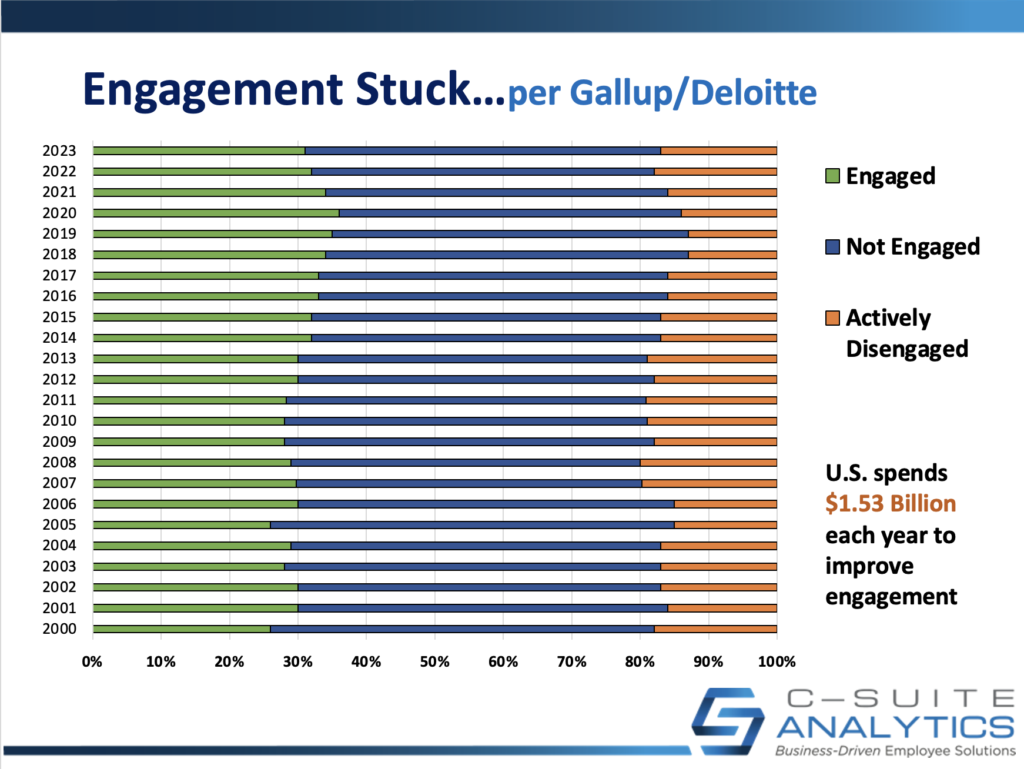Most hiring tools answer whether candidates can and will do the job, but not if they’ll stay. Learn how realistic job previews and motivational-fit interviews can improve retention from day one.
HBR Article on Customers also Applies to Employees

I was struck when reading the Harvard Business Review[i] (HBR) article, “Customer Surveys Are No Substitute for Actually Talking to Customers,” and if you want to read the entire article, it’s footnoted below, but the author’s summary of it is this:
“Surveys are a pain to complete and, as a result, most people don’t invest much thought in filling them in, which means the information they give is low-quality and unlikely to provide strategic insight. Talking to customers and asking open-ended questions yields better results and in most cases your managers will not need to conduct much more than a dozen such interviews to gain a complete picture of customer needs and preferences.”
So if talking to customers versus surveying them is now deemed as more effective by such a highly-credible source, shouldn’t this same principle be applied to employees as well? The chart below offers a clue.
——
Further Reading: Who Drives Retention Success? Gallup Says Your Team Leaders
——
Raise the Gallup and HBR Research and Findings on Employee Engagement Up a Notch
Gallup began surveying companies regarding their levels of employee engagement in 2000. So they now have 24 years of comparative data to measure how much employee engagement has improved, given that about three-quarters of companies do such a survey and then develop improvement plans after. Here are their results:

Gallup has said publicly that little has changed on the employee engagement front during the past 24 years. There are several reasons for this including…
- As HBR says, surveys of any kind are taken more seriously by those who interpret them than by those who complete them.
- Follow-up “action plans” result in little action, especially on the manager side.
- And HR-driven actions are always one-size-fits-all programs for broad topics like recognition and communication.
But let’s take the HBR finding and raise our research up a notch. Unlike customers who change products for many reasons, we know that the number one reason employees quit jobs…or more importantly stay in jobs…is how much they trust their direct supervisors. And this applies to engagement as well. So when re-reading the three reasons why employee engagement surveys fail, is it any wonder that not only is employee engagement stuck in the mud but also that employee turnover remains the top worry among corporate CEOs?[ii]
——
Further Reading: Who Jeopardizes Engagement the Most? Gallup Math Says It’s Managers
——
The HBR study also points out the importance of asking open-ended questions. When applying these principles to engaging and retaining employees, the stars are aligning that Stay Interviews are an awfully good idea. Here’s a refresher:
- Managers invite each individual employee to meet, saying “I want to learn what I can do to make working here better for you”.
- Managers are then trained to ask five specific and heavily-researched open-ended questions.
- Managers are also trained to listen, probe to learn more, take pages of notes, and develop at least one action they can take to help employees stay longer and engage more.
The part that says “managers are trained” is more complex because managers must develop new skills…and practice those skills. The Stay Interview training that we provide consumes three full hours of skill practice, role-play, and feedback to ensure each manager is comfortable scheduling their initial Stay Interviews the very next day.
——
Further reading: Best Employee Engagement Gauge: 1-Day Survey or 1-on-1 Conversation?
——
Improving Employee Engagement and Retention with Stay Interviews
Stay Interviews versus engagement surveys? That’s an easy one because Stay Interviews…
- Put managers in the solution seat versus HR…or no one.
- Provide data that is always current because these initial conversations become the grist of future discussions resulting in more openness and even better solutions.
- And Stay Interviews provide one-on-one, individualized solutions to improve retention and engagement…versus one-size-fits-all “solutions” that are hardly ever actual solutions.
And here’s one last thought. Research tells us that top performers out-perform average performers by four-to-one. Chew on that for a moment because not only does it tell us that losing a top performer cost four times more to replace…but top performers’ survey data is mixed in with the rest because all inputs are anonymous. Managers, though, readily know who their top performers are and will go to extra steps to keep them…once they know what is required to do so which only Stay Interviews can disclose.
Master Training: Employee Retention Intensive for HR Leaders
Specifically designed for HR leaders who have been charged with reducing turnover and maintaining a stable, skilled workforce. Based on Dick Finnegan’s ground-breaking work with Stay Interviews and Finnegan’s Arrow, our expert facilitators will equip you with all the tools you need to refine and implement your retention strategies to build a thriving, engaged workplace culture. Secure your spot today!
[i] https://hbr.org/2019/01/customers-surveys-are-no-substitute-for-actually-talking-to-customers?utm_medium=social&utm_campaign=hbr&utm_source=linkedin&tpcc=orgsocial_edit
[ii] Chief Executive Group, 2024



